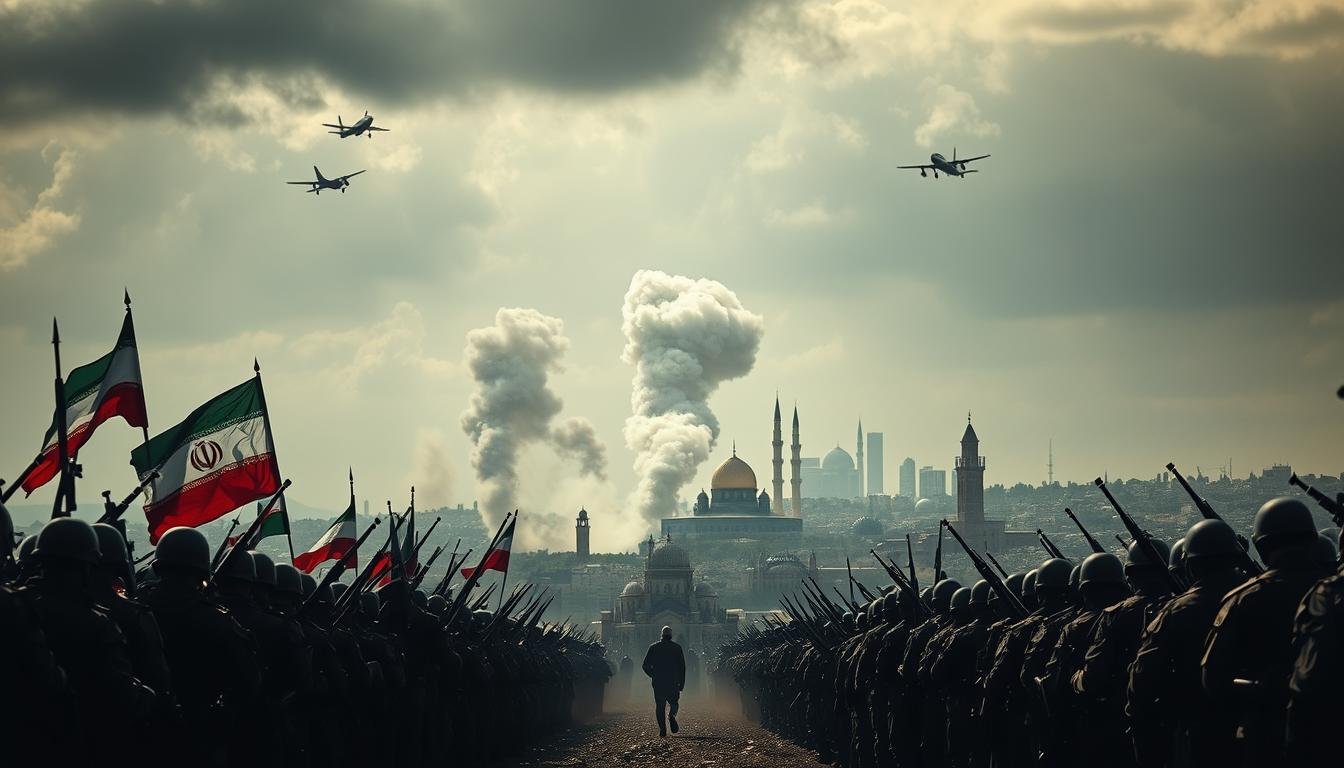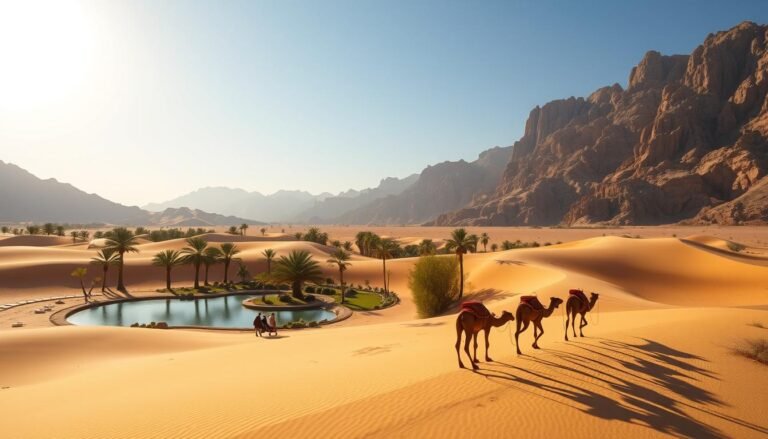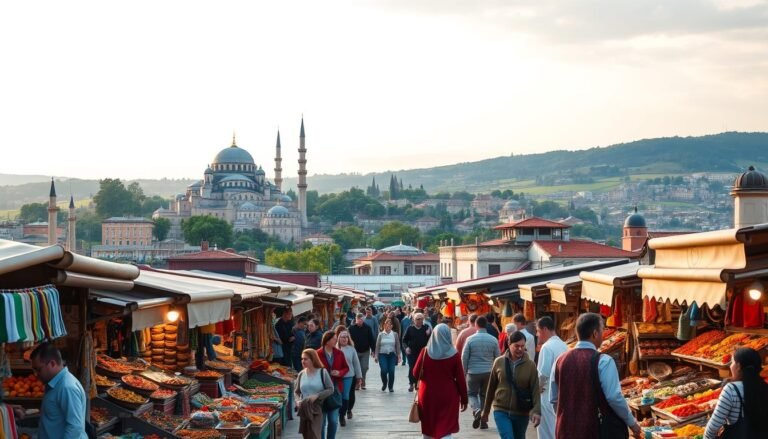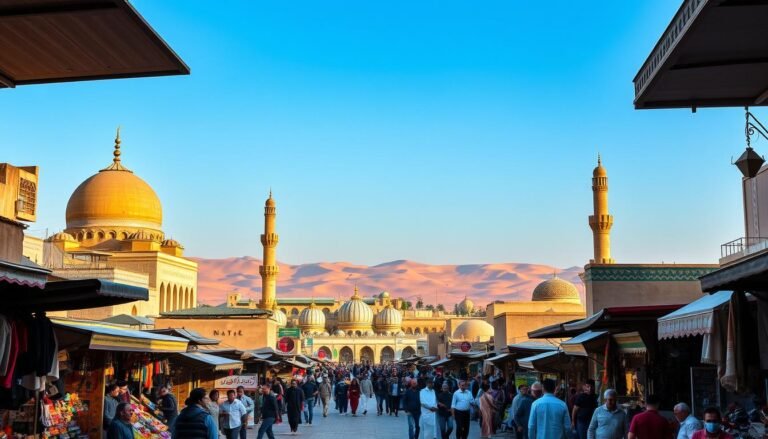Exploring the Ongoing Iran-Israel Conflict
What is the conflict between iran and israel: The recent missile strikes between Israel and Iran have heightened concerns of a potential wider regional conflict. The latest exchanges occurred just hours after planned U.S. talks on Iran’s nuclear program were called off, adding to the tension.
This escalation is part of a broader historical context, with both nations having a complex and contentious relationship. The attack by both sides has raised questions about the future of regional stability and the potential for further strikes.
Understanding the dynamics of this conflict is crucial, as it has significant implications for global security and diplomatic relations.
Recent Escalation of Hostilities
The Iran-Israel conflict has witnessed a new level of hostility in the latest developments. The situation has escalated significantly, with both countries engaging in aggressive military actions.
Israel’s Strikes on Iranian Nuclear Facilities
Israel has conducted strikes on Iranian nuclear facilities, escalating tensions between the two nations. These strikes have been perceived as a significant threat by Iran, prompting a strong response. According to reports, Israel’s actions were aimed at crippling Iran’s nuclear capabilities.
Iran’s Retaliatory Missile Attacks
In response to Israel’s actions, Iran launched hundreds of ballistic missiles and drones into Israel, causing multiple casualties and significant damage to an oil refinery and a prominent science institute. Iran’s Revolutionary Guard Corps stated that they had targeted Israel’s fuel structure in response to Israel’s strikes on its oil facilities in the south. Iranian state media reported these attacks as a justified response to Israeli aggression.
| Aspect | Iran’s Actions | Israel’s Actions |
|---|---|---|
| Military Response | Launched hundreds of ballistic missiles | Conducted strikes on Iranian nuclear facilities |
| Targets | Israeli oil refineries and science institutes | Iranian nuclear facilities and oil infrastructure |
| Reported By | Iranian state media | Israeli military reports |
The response from Iran has been significant, with the use of ballistic missiles and drones against Israeli targets. The effectiveness of these launched missiles in penetrating Israel’s sophisticated air defense systems has been a point of discussion among military analysts.
Casualties and Damage Assessment
As the conflict between Iran and Israel intensifies, the humanitarian impact is becoming increasingly apparent. The recent escalation has resulted in significant casualties and damage to infrastructure on both sides.
Impact on Iranian Civilians and Infrastructure
Reports from Iranian state media indicate a substantial number of casualties due to Israeli strikes. According to Iran’s UN ambassador, 78 people have been killed and over 320 wounded since the start of Israel’s attack. Among the dead are nine top nuclear scientists and four high-ranking military generals, significantly impacting Iran’s military and nuclear capabilities.
Iranian Death Toll and Facility Damage
The strike on Iranian nuclear facilities, including the Natanz enrichment site, has raised concerns about the potential for nuclear proliferation. Assessments from the International Atomic Energy Agency suggest significant damage to these facilities, potentially setting back Iran’s nuclear weapons program. The Iranian government has reported civilian casualties and infrastructure damage, although independent verification is challenging due to limited access to the affected areas.
- The Natanz enrichment site suffered considerable damage.
- Iran’s nuclear program is likely to be significantly impacted.
- Civilian casualties have been reported, with challenges in verifying the exact numbers.
What is the Conflict Between Iran and Israel
Understanding the Iran-Israel conflict requires delving into its historical context and the key points of contention between the two nations.
Historical Context of Tensions
The historical backdrop of the Iran-Israel conflict is complex, involving decades of political, religious, and geopolitical factors. The 1979 Iranian Revolution marked a significant turning point, as Iran transitioned from being an ally of Israel to a theocratic state opposed to Israeli existence.
Key Points of Contention
The primary issues driving the conflict include:
- Iran’s nuclear program, which Israel views as a threat to its existence.
- Iran’s support for proxy groups like Hezbollah and Hamas, which are hostile to Israel.
- Israel’s military operations against Iranian targets in Syria and elsewhere, justified as preemptive self-defense.
The competing regional ambitions of both nations have contributed to broader Middle East instability. The conflict is further complicated by Iran’s claims that its nuclear program is for peaceful purposes, a stance disputed by Israel and its allies.
Iran’s Nuclear Program: The Central Issue
At the heart of the escalating tensions between Israel and Iran lies the contentious issue of Iran’s nuclear ambitions. The international community is increasingly concerned about the implications of Iran’s nuclear program, which has been a point of contention for years.
Uranium Enrichment Concerns
Iran’s advancement in uranium enrichment technology has raised significant concerns among global powers, particularly Israel. The enrichment activities are seen as a step towards developing nuclear weapons, which Israel views as an existential threat. Israeli Prime Minister Benjamin Netanyahu has been vocal about the dangers posed by Iran’s nuclear program, emphasizing that it jeopardizes regional and global security.
Israel’s Security Perspective
From Israel’s perspective, Iran’s nuclear capabilities represent a direct threat to its existence. The “Begin Doctrine” adopted by Israel justifies preemptive strikes against adversaries developing nuclear weapons. Netanyahu’s recent address to the Iranian people, distinguishing between the Iranian regime and the Iranian people, underscores Israel’s strategic concerns and its willingness to take action to protect its security.
Military Targets and Strategic Objectives
The recent surge in hostilities between Iran and Israel has highlighted the importance of understanding the military targets and strategic objectives of both nations. The conflict has escalated to include significant strikes on key infrastructure and personnel.
Israel’s Focus on Nuclear Sites and Scientists
Israel has been focusing its attacks on Iranian nuclear facilities and scientists involved in the nuclear program. According to recent news reports, these strikes have significantly impacted Iran’s nuclear capabilities. The targeting of scientists has been a particular point of contention, with implications for Iran’s ability to continue its nuclear program.
Iran’s Targeting of Israeli Infrastructure
In response to Israeli actions, Iran has launched missiles at Israeli infrastructure, including a major oil refinery near Haifa. Iranian state media reported that the Revolutionary Guard Corps targeted Israel’s fuel structure in retaliation for Israel’s strikes on Iranian oil facilities. The attack resulted in significant damage and casualties, with four women killed in the town of Tamra. The use of missiles in this attack highlights Iran’s capability to launch effective counterattacks against Israeli targets.
International Diplomatic Responses
As tensions between Iran and Israel continue to rise, the global community is responding with a mix of diplomatic efforts and cautionary statements. The international community is closely monitoring the situation, with various leaders calling for restraint.
US Position and Trump’s Statements
President Donald Trump took to Truth Social to address the conflict, stating that the U.S. had “nothing to do with the attack on Iran, tonight.” However, he also warned Iran that if it were to attack the U.S. in any way, “the full strength of U.S. Armed forces will come down on [Iran] at levels never seen before.” Trump’s statement was a mix of denial of involvement and a threat of force, yet he also expressed a desire for a deal between the sides, suggesting that a resolution could be achieved quickly.
The conflict has also impacted planned diplomatic initiatives. For instance, nuclear talks that were scheduled to take place in Oman have been cancelled. Other world leaders, including British Prime Minister Keir Starmer, UN Secretary General Antonio Guterres, and Pope Francis (not Pope Leo XIV, as the current Pope is Francis), have called for de-escalation of the dangerous situation.
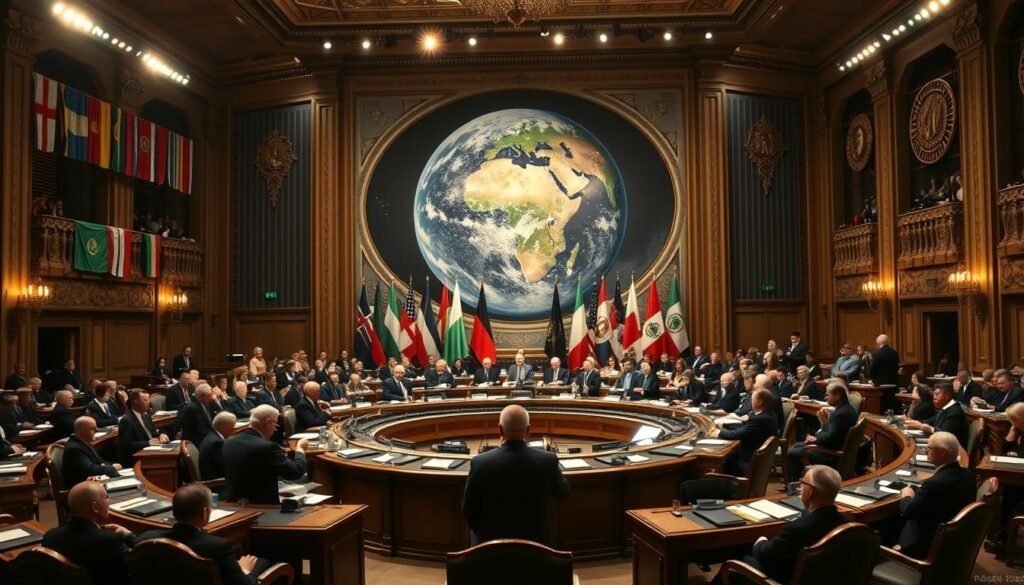
European and Global Reactions
As the conflict between Iran and Israel intensifies, European and global leaders are urging calm and diplomatic resolution. The international community is increasingly concerned about the potential consequences of escalating hostilities in the Middle East.
British Prime Minister Keir Starmer has been vocal about the need for restraint. “Stability in the Middle East must be the priority,” he said. “Now is the time for restraint, calm, and a return to diplomacy.” This sentiment is echoed by other European leaders who are concerned about the implications of the conflict on regional stability and global security.
“Stability in the Middle East must be the priority… Now is the time for restraint, calm, and a return to diplomacy.” – British Prime Minister Keir Starmer
The European Union has also taken a proactive stance, with High Representative Kaja Kallas convening an emergency meeting of EU foreign ministers to discuss the crisis. The EU is working to coordinate a unified response among its member states, emphasizing the need for a peaceful resolution to the conflict.
The United Nations has called for maximum restraint from both sides. UN Secretary-General Antonio Guterres emphasized that the situation between Iran and Israel has become increasingly volatile, necessitating immediate de-escalation. The international organization’s response highlights the global concern over the Iran nuclear program and its implications for regional and global security.
| Global Leader | Statement |
|---|---|
| British Prime Minister Keir Starmer | Urged restraint and prioritized stability in the Middle East |
| UN Secretary-General Antonio Guterres | Called for maximum restraint from both Iran and Israel |
| Pope Leo XIV | Appealed for sincere dialogue and emphasized that “no one should ever threaten another’s existence” |
The global media is also playing a crucial role in shaping public opinion and influencing the news narrative around the conflict. Various media outlets are providing extensive coverage, highlighting the humanitarian and geopolitical implications of the conflict.
The reactions from global leaders underscore the complexity and the high stakes involved in the Iran-Israel conflict. As the situation continues to unfold, the international community remains vigilant, advocating for a peaceful resolution that addresses the concerns of all parties involved, including the Iranian state.
Cancelled Nuclear Talks and Diplomatic Fallout
As hostilities escalate, diplomatic efforts, including planned nuclear talks, have been derailed. The recent conflict between Iran and Israel has led to a significant setback in nuclear negotiations between Iran and the U.S.
Planned US-Iran Negotiations in Oman
The sixth round of talks about Iran’s nuclear program, scheduled to take place in Oman, was canceled on Saturday. The Omani foreign minister announced the cancellation on social media, stating that “diplomacy and dialogue remain the only pathway to lasting peace.”
The cancellation of these talks has significant implications. The negotiations were aimed at limiting Iran’s nuclear program in exchange for sanctions relief. Iran’s spokesperson justified the cancellation by calling dialogue with the U.S. “meaningless” following Israel’s attacks.
Oman’s role as a diplomatic intermediary is crucial in this context. The Omani foreign minister’s statement emphasizes the importance of diplomacy in achieving peace. However, the current escalation has put these efforts to the test.
President Trump’s messaging on the issue has been contradictory. While threatening Iran, he has also suggested that a deal could be easily achieved. This mixed messaging complicates the diplomatic landscape.
| Key Players | Roles | Current Stance |
|---|---|---|
| U.S. | Negotiator | Seeking to limit Iran’s nuclear program |
| Iran | Negotiator | Demanding sanctions relief |
| Oman | Diplomatic Intermediary | Advocating for diplomacy and dialogue |
| Israel | Conflict Party | Has carried out attacks on Iranian nuclear facilities |
The cancellation of the nuclear talks highlights the fragility of diplomatic efforts in the face of escalating conflict. The international community remains hopeful that diplomacy can prevail, but the path forward is fraught with challenges.
Regional Implications and Allied Involvement
The Iran-Israel conflict is not just a bilateral issue; it has far-reaching consequences for regional stability. As the situation continues to unfold, the potential for a wider conflict in the Middle East grows, drawing in various regional players and impacting global energy markets.
Strategic Chokepoints at Risk
One of the most significant concerns is Iran’s potential closure of the Strait of Hormuz, a critical waterway through which a substantial portion of the world’s oil is transported. This move would have severe economic implications, affecting not just the region but global energy supplies.
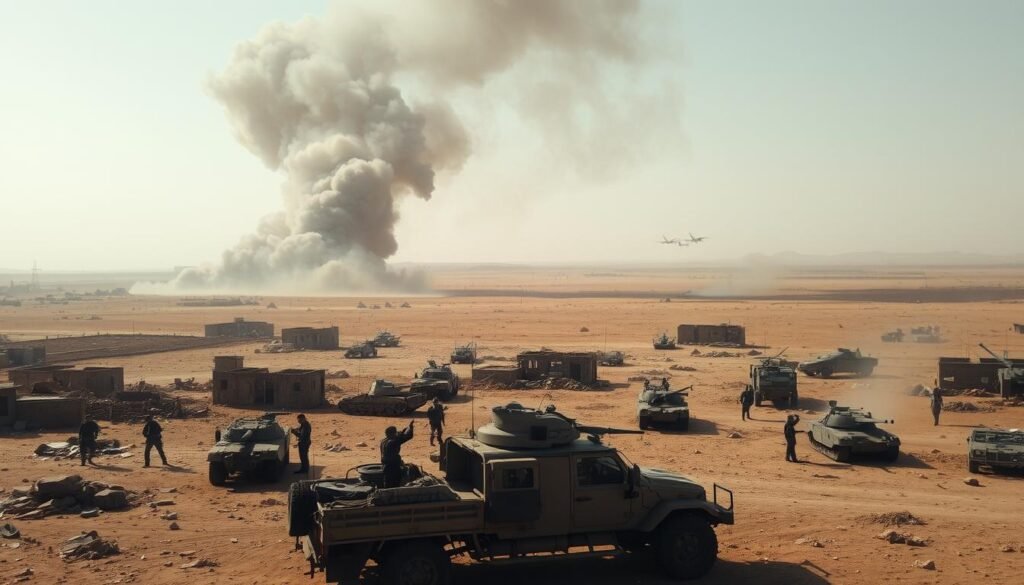
Involvement of Regional Powers
Countries like Saudi Arabia and Turkey are closely monitoring the situation. Their responses could significantly influence the trajectory of the conflict. At this time, the international community is on high alert, watching for any signs of escalation that could lead to a broader regional conflagration.
The current situation in the region is volatile, with various factors at play. The table below summarizes some key aspects:
| Regional Actor | Potential Action | Impact |
|---|---|---|
| Iran | Closure of Strait of Hormuz | Disruption of global oil supplies |
| Saudi Arabia | Support for Israel | Escalation of conflict |
| Turkey | Diplomatic intervention | Potential for de-escalation |
The involvement of the Houthi regime, supported by Iran, adds another layer of complexity to the situation. Their actions could potentially draw in other regional and international actors, further complicating efforts to manage the conflict.
In conclusion, the Iran-Israel conflict has significant implications for the region, affecting not just the immediate parties involved but also broader regional and global stakeholders. Understanding these dynamics is crucial for assessing the potential outcomes and mitigating the risks of a wider conflict.
Iranian Internal Reactions
As news of Israel’s strikes on Iranian generals spread, the Iranian populace reacted with a mix of emotions, from cautious optimism to outright hope. The internal reactions within Iran have been complex, reflecting both the dissatisfaction with the current regime and the fear of potential escalation.
Public Protests and Government Response
The government has maintained a firm stance, condemning the Israeli actions and rallying support for the regime. However, there have been reports of public protests, with some citizens expressing dissatisfaction with the government’s handling of the situation. The protests highlight the deep-seated grievances many Iranians have against their government.
Reports of Private Citizen Sentiments
Private citizens have shared their sentiments, with some expressing hope that the Israeli strikes could weaken the regime. “We have not heard any good national news for many years. For once, one news made us slightly happy,” said an Iranian citizen, reflecting a sentiment shared by others who see the strikes as a potential catalyst for change. Touraj, a 50-year-old photographer from Rasht, stated, “I think this is the beginning of the end. This is the start of the collapse of the body of a tiger that is empty inside. This is going to make people more brave.”
“This is the start of the collapse of the body of a tiger that is empty inside.”
The historical context of internal dissent in Iran suggests that such sentiments are not new, but the current conflict has reignited hopes for change among some segments of the population.
Challenges in Assessing Public Opinion
Accurately assessing Iranian public opinion is challenging due to restrictions on free expression and the risks citizens face for criticizing the regime. Nonetheless, the available information indicates a complex landscape of opinions, with some Iranians viewing the Israeli strikes as a potential opportunity for regime change.
| Aspect | Government Response | Public Sentiment |
|---|---|---|
| Israeli Strikes | Condemnation and rallying support | Mixed reactions, hope for regime change |
| Public Protests | Suppression and control measures | Dissent and dissatisfaction |
| Private Citizen Views | Monitoring and potential repercussions | Hope and cautious optimism |
The situation within Iran remains fluid, with the potential for further escalation or change. As the conflict continues, understanding the internal dynamics within Iran will be crucial for assessing the broader implications of the Iran-Israel conflict.
Military Capabilities and Strategic Analysis
The recent escalation between Iran and Israel highlights the significant role of military capabilities, especially Iran’s extensive missile arsenal. This analysis will delve into the specifics of Iran’s military strategy and its implications for the conflict.
Israel’s Air Defense Systems
Israel’s air defense systems have been a crucial component of its military strategy against Iran’s missile attacks. These systems are designed to detect and intercept incoming missiles, providing a layer of protection against the air threats posed by Iran’s ballistic missile arsenal.
Iran’s Missile Arsenal and Capabilities
Iran’s missile capabilities are a cornerstone of its military strategy against Israel. The country has developed a range of ballistic missiles and drones capable of reaching Israeli territory. Iran’s strategy involves developing asymmetric capabilities to counter the conventional military superiority of Israel and the United States.
The Revolutionary Guard Corps plays a pivotal role in the development and deployment of Iran’s military forces, including its missile arsenal. This elite force is responsible for advancing Iran’s military technology and coordinating with allied groups like the Houthis in Yemen to launch strike operations against Israel from multiple directions.
The conflict between Israel and Iran has significant implications for regional stability and global security. Understanding the military capabilities and strategies of both nations is crucial for assessing the potential outcomes of the conflict and the prospects for de-escalation.
Prospects for De-escalation and Peace
The Iran-Israel conflict has reached a critical juncture, with many wondering if a peaceful resolution is achievable. President Donald Trump recently took to Truth Social to urge both countries to make a deal, stating that “We can easily get a deal done between Iran and Israel, and end this bloody conflict!!!”
This statement has sparked debate about the potential diplomatic pathways forward. While Trump’s assertion that a deal can be “easily” achieved is optimistic, it is crucial to examine the fundamental obstacles to lasting peace between the Islamic Republic of Iran and Israel.
The deep ideological differences between the two nations pose a significant challenge. However, countries like Oman, which have maintained relations with both sides, could play a crucial role in facilitating dialogue. The international community’s involvement, including the US and European nations, will be vital in mediating a peaceful resolution.
To move beyond the current cycle of attacks and retaliation, both Iran and Israel must be willing to compromise and work towards a more stable relationship. While a complete normalization of relations might be a long-term goal, a reduction in hostilities is a crucial first step. As Trump mentioned, many unspecified meetings are taking place, indicating that there are ongoing efforts to find a peaceful resolution.
The path to peace between Israel and Iran will be complex, but with sustained diplomatic efforts, it is possible to envision a future where the two nations can coexist without the threat of conflict. The role of international mediators and the willingness of both sides to engage in meaningful dialogue will be key to achieving this goal, ultimately bringing peace to the sides involved.

